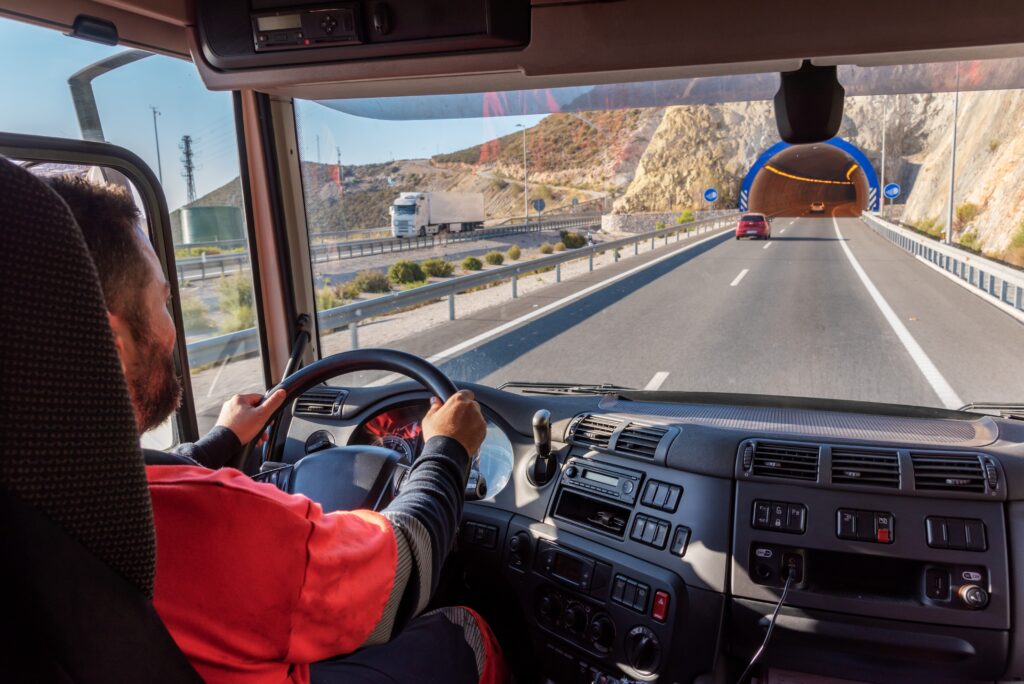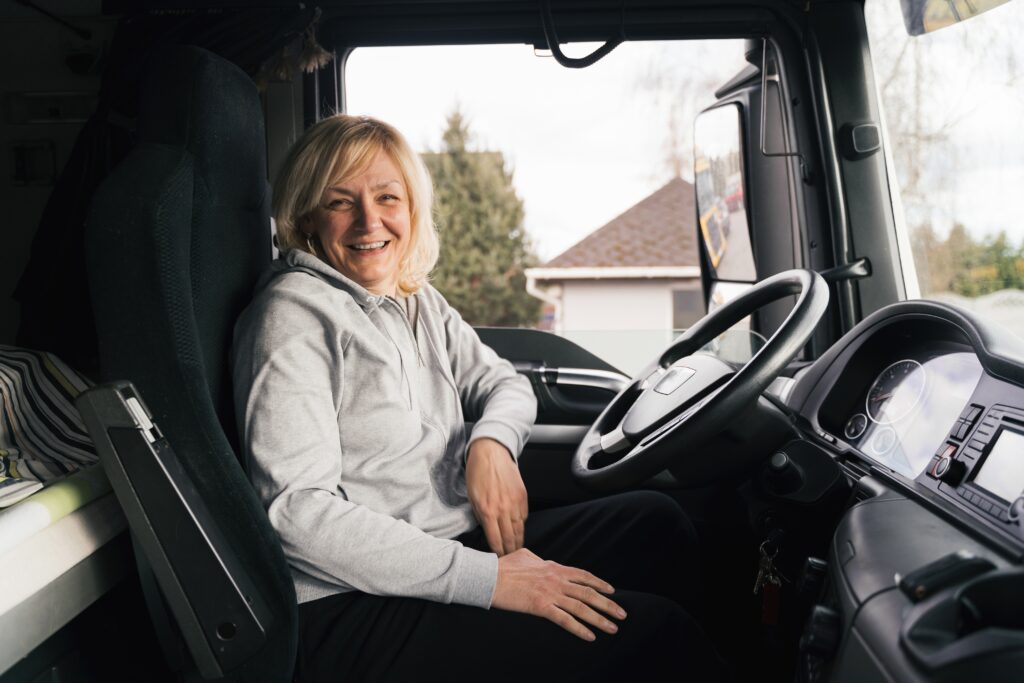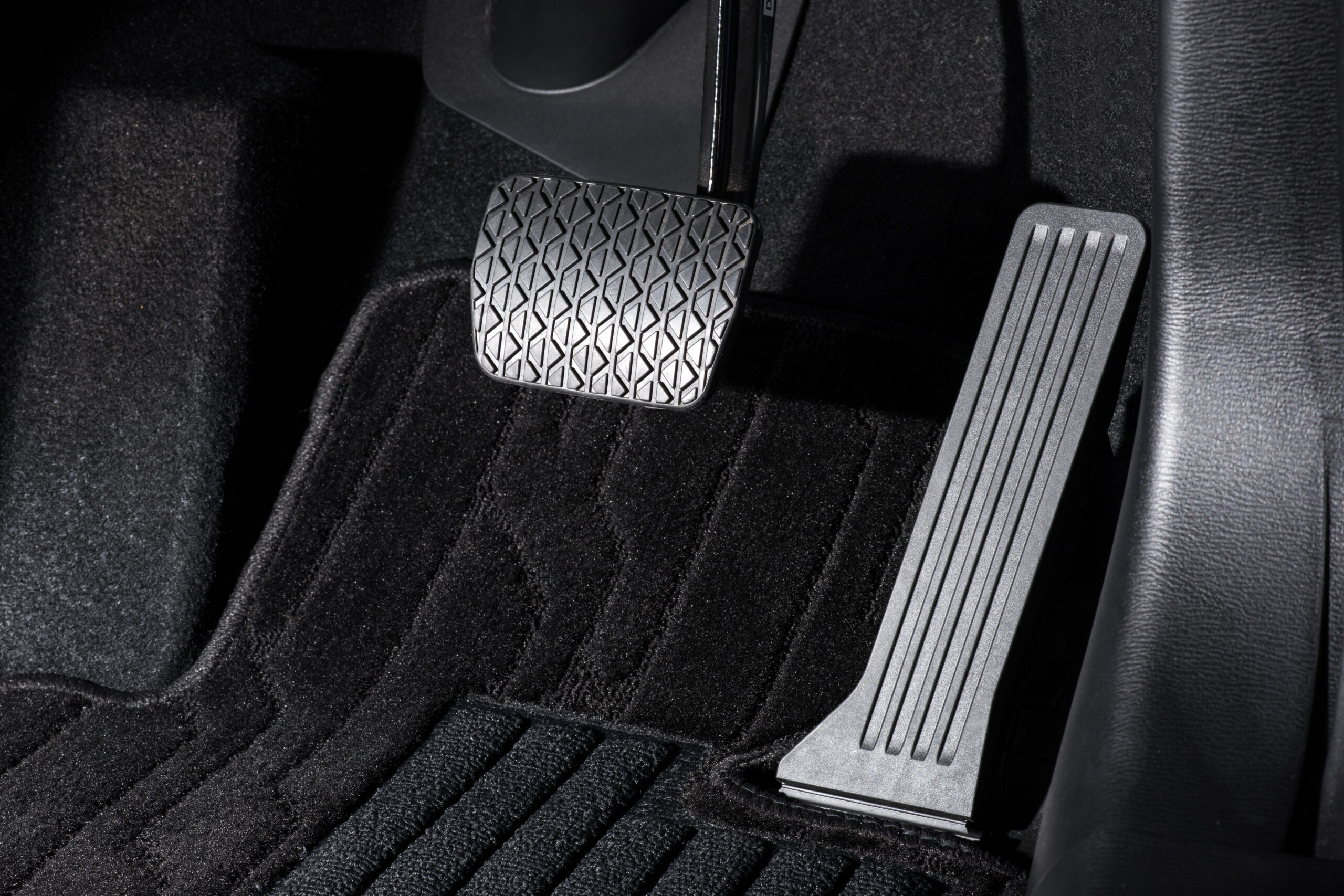Table of Contents
One of the most common questions among those looking to enter the fulfilling world of HGV driving is whether HGVs are automatic or not. So, we thought it would be useful to explore this!
Within this piece, our HGV training experts explain whether the HGVs you can expect to drive have automatic transmissions and how automatic HGVs compare to their manual counterparts.
What is an automatic HGV?
HGVs have a transmission, also known as a gearbox, that’s required to take power from the engine to make its wheels move. Just like in your domestic car, HGVs with a manual transmission, the gear shifts needed to move the HGV at various speeds are controlled by the driver using a clutch and gearstick.
But, with automatic vehicles, gear changes are completed automatically without any input from the HGV driver, hence the name ‘automatic HGV’.
As such, automatic HGVs don’t feature a clutch – all the operator has to do to move this type of HGV is select D (drive) on the shifter stick, accelerate, and brake while the automatic transmission fluid conducts the gear change independently.
*Did You Know? Through our recruitment partnership with Blue Arrow, HGV Training Network can help you find your first job after completing your HGV training!

Benefits of driving an automatic HGV
HGV drivers who operate automatic lorries experience a whole host of advantages, such as:
They’re excellent in stop-and-start traffic
A significant selling point of automatic HGVs is how simple, smooth, and efficient they are to operate during congested or rush hour traffic.
In any manual vehicle, pressing the clutch repeatedly to shift up and down gears during slow-moving traffic can be tedious work and require quite a lot of focus.
However, this isn’t an issue with an automatic HGV, as they don’t feature a clutch or require manual clutch control to accelerate and stop – perfect for use in slow-moving traffic.
They’re easier to manoeuvre
Trucks have a much more complex gear system than cars as they’re much bigger and require more power to move – some large vehicles can have up to 16 gears and may operate using splitter or range change gearboxes!
But, with an automatic HGV, the stress of gear changes, splitting gears or flipping between each is removed, as the transmission does all the hard work for you!
They’re safer
Following on from above, as the HGV driver doesn’t have to use a gear stick, they can keep both hands on the steering wheel, providing greater and steadier control over the vehicle.
Plus, as there’s less to think about, you’ll feel much more focused and calm on the road and can dedicate all your attention to navigating your surroundings, avoiding potential hazards and accidents.
*Want to learn to drive professionally in an automatic HGV? Drop the team a message – we’d be more than happy to help you get your training journey started.

Advantages of a manual HGV
Manual HGV driving is still utilised amongst some companies and comes with a host of benefits:
You can drive both manual and automatic HGVs
With a manual HGV licence, you can drive both types of vehicles, meaning you can also work for companies that still use manual trucks.
It also saves you the hassle of having to sift through job descriptions to check whether your licence applies to a particular job.
You gain the full truck driving experience
For many professional drivers, especially veterans in the industry, manually shifting gears and feeling the control you have over your lorry is a great feeling and is part of the whole trucker experience – something that is lacking with automatic transmissions.
They require less maintenance than automatic HGVs
Due to their less complex transmission instruments, manuals are considered to be more reliable and easier to maintain. As a result, you could spend more time on the job and less time with the RAC!
However, it’s important to note that this depends on the make and model of the HGV and that many automatic HGVs have become a lot more durable in recent years!
Comparing automatic and manual HGVs
Now that we’ve explored the two types of HGV transmissions, it’s time to see how they compare head-to-head.
Overall, automatic HGVs can be considered a safer choice than manuals for truckers, as their attention isn’t divided between the gearbox and the road ahead.
What’s more, they’re typically more comfortable to drive, as automatic HGV drivers don’t experience the leg ache associated with clutch control.
Plus, if manually shifting gears and experiencing ‘true driving’ isn’t something you really care for, you won’t lose much by operating automatic HGVs.
However, opportunities in the industry may be reduced for automatic-only HGV drivers when it comes to agency work, as they have to be able to drive whatever vehicle they’re given, including manuals. But there are still plenty of other roles to consider due to the ongoing driver shortage, so this may not be an issue for you.

Are HGVs automatic in the industry?
The majority of companies in the haulage and logistics industry are now operating automatic lorries instead of manuals because of the benefits explained above. Many businesses strive to make working life on the road as easy and safe as possible for their drivers, which is generally more achievable with automatic lorries over manuals.
Plus, with more focus on their driving, HGV operators are less likely to crash and damage company vehicles, saving logistic businesses their reputations and money in repairs and replacement HGVs.
Are HGVs automatic at UK driver training centres?
If many companies across the haulage industry tend to use automatic HGVs, do training providers use automatics too?
Put simply, the answer differs between UK training providers, although most lean towards using automatics.
HGV driver training courses utilise automatic HGVs as they’re much easier to learn in – students can focus more on manoeuvring a larger vehicle, becoming aware of blind spots and the rules of the road for HGV drivers.
While other HGV training centres may teach trainee HGV drivers in a manual truck so they understand the mechanics of HGV gearboxes – it really just depends.
Can I drive a manual HGV if I pass in an automatic?
Wondering if you can drive a manual heavy goods vehicle with an automatic HGV licence?
Gov.UK states that the current situation is as follows: ‘where a driver holds a car driving licence, and then takes his lorry or bus test on an automatic vehicle, his driving licence will restrict him to only being able to drive large automatic vehicles.’
This also applies if you have a standard manual car or bus licence.

Start your HGV training today
To gain your HGV licence and driver CPC, you’ll need to embark on a professional training course with a seasoned HGV instructor who has first-hand experience operating large lorries.
Here at HGV Training Network, we’ll provide you with all the essential skills you need to kickstart your driving career!
So, if you have questions such as ‘how much does HGV training cost?’, ‘what’s involved in an HGV test?’ or ‘how long do HGV training courses last?’ – our team are on hand to assist you.
To find an answer to these questions and more, get in touch with our dedicated training advisors today! They’ll explain everything you need to know about our HGV training, including our flexible financing options.








